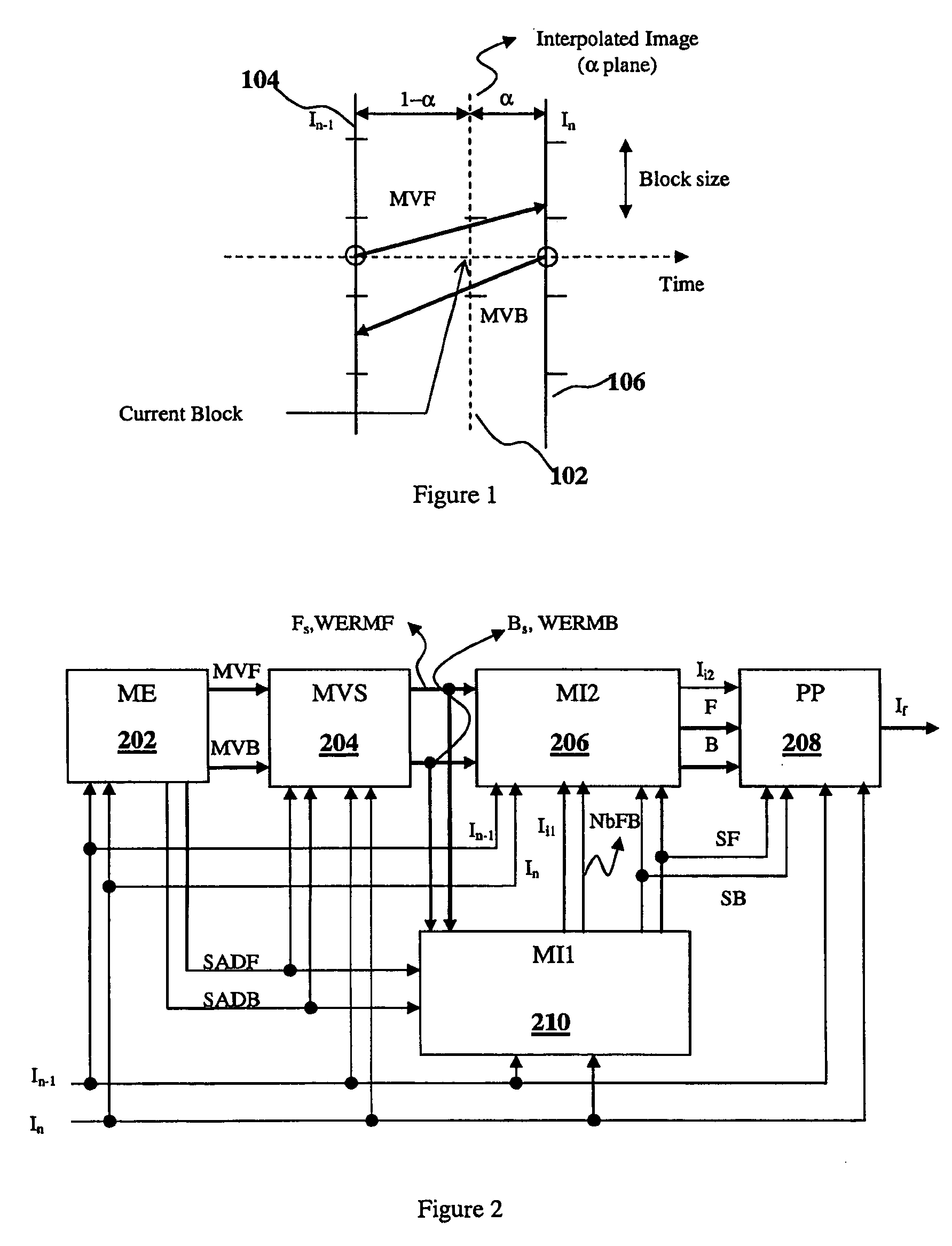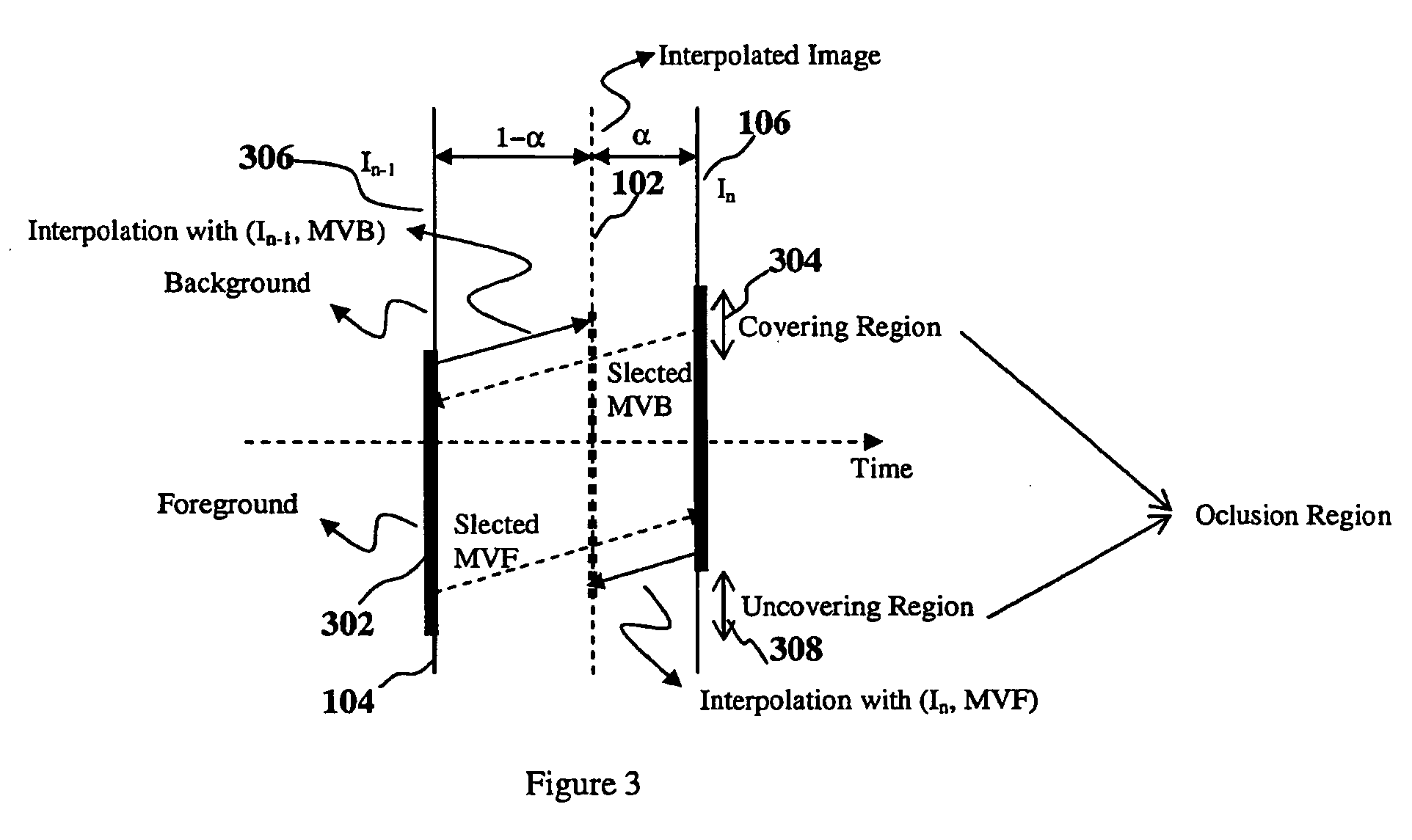Image interpolation with halo reduction
a technology of interpolation and image, applied in the direction of picture reproducers using projection devices, signal generators with optical-mechanical scanning, television systems, etc., can solve the problems of introducing artifacts, many artifacts, including the halo effect, and affecting the quality of interpolation,
- Summary
- Abstract
- Description
- Claims
- Application Information
AI Technical Summary
Problems solved by technology
Method used
Image
Examples
Embodiment Construction
[0048]In a frame rate conversion (FRC) application, the “Halo Effect” is a visual artifact that occurs when a foreground object is moving against a detailed background. A system for reducing the Halo Effect consistently with the present invention includes a pixel-based motion vector (MV) selection, a preliminary interpolation, local shape adaptive windowing for MV foreground / background correction, and a final interpolation with some additional post-processing. The preliminary and final image interpolations are based on occurrence frequency of local Sum of Absolute Differences (SADs) of the forward and backward motion vector estimations. The MV correction for halo reduction can then be based substantially on local image intensities and on local MV variations. Some embodiments are non-iterative techniques that are efficient for image memory usage and communication bandwidth between the image memory and the image processor.
[0049]FIG. 1 illustrates the time position of an interpolated i...
PUM
 Login to View More
Login to View More Abstract
Description
Claims
Application Information
 Login to View More
Login to View More - R&D
- Intellectual Property
- Life Sciences
- Materials
- Tech Scout
- Unparalleled Data Quality
- Higher Quality Content
- 60% Fewer Hallucinations
Browse by: Latest US Patents, China's latest patents, Technical Efficacy Thesaurus, Application Domain, Technology Topic, Popular Technical Reports.
© 2025 PatSnap. All rights reserved.Legal|Privacy policy|Modern Slavery Act Transparency Statement|Sitemap|About US| Contact US: help@patsnap.com



